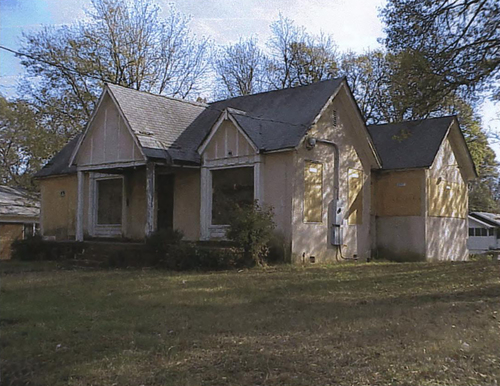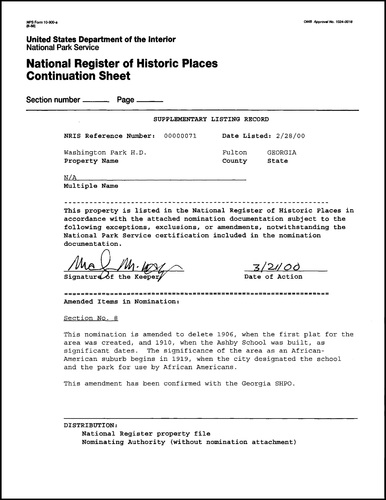Washington Park Historic District
Since the 1970s, the historic structures of Washington Park have been endangered by infrastructure improvements in Atlanta.
In 1976, the construction of the Ashby Street MARTA (Metropolitan Atlanta Rapid Transit Authority) station and tracks resulted in the loss of the historic neighborhood swimming pool, notable landscaping features at Washington Park, and historic houses on the South side of Lena Street. The construction of a PATH trail along Lena Street also contributed to a loss of historic homes. Other threats loomed in city-sponsored redevelopment and transportation projects.
News report on MARTA construction damaging areas of
Washington Park neighborhood, May 6, 1981.
WSB Newsfilm Collection, Walter J. Brown Media Archives and Peabody Awards Collection
Urban renewal efforts have historically had a negative impact on Black communities in the United States. Historically white communities are often seen as more valuable to maintain compared to historic Black structures, which often fall into disrepair or are bulldozed completely in order to make room for new construction. This is an aspect of the process of gentrification, which takes place in many large cities today.
Washington Park itself was listed on the City of Atlanta Historic Landmark list in June 1989, which strongly limited any possible destruction to the area, but the surrounding neighborhood was still under threat. Recognizing that these changes posed a continued threat to the historic and cultural significance of Washington Park, a group of volunteers became determined to get the neighborhood listed on the National Register of Historic Places - the official list of the Nation's historic places worthy of preservation. Washington Park received this designation in February 2000. Although the listing does not guarantee protection of the sites within the historic district, it offers value by identifying a community’s significant historic resources. Additionally, owners of properties within the district may qualify for tax incentives if their property’s historic character is kept intact.



